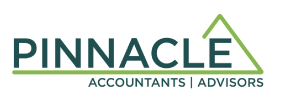
New Specified Corporate Income Rules
For corporate fiscal years ending after March 20, 2017, there are new rules to be aware of related to the small business deduction.

The small business deduction is a tax rate reduction available to Canadian-controlled private corporations (“CCPCs”) in Canada on active business income. Generally speaking, these CCPCs have a reduction of tax on up to $500,000 of taxable income, resulting in a combined federal and provincial (British Columbia) tax rate of approximately 14% on income below the $500,000 threshold. Without this rate reduction, the combined tax rate would be more like 25%.
Previous rules – sharing of small business deduction
Corporations who are associated with one another are generally required to share the small business deduction. The association rules are somewhat complex, but as a simple example if one person fully owns and controls two corporations, those two corporations are associated and must share one $500,000 small business deduction between them. The small business deduction can be allocated in whatever manner the corporations agree on.
Scenarios where the small business limit was previously not required to be shared include:
- Husband owns corporation A and wife owns corporation B. Corporation A and corporation B would each be entitled to their own $500,000 small business deduction.
- Brother owns corporation A and sister owns corporation B. Corporation A and corporation B would each be entitled to their own $500,000 small business deduction.
In these simple examples, it makes sense that the corporations would be entitled to their own small business deductions, especially if the corporations were operating completely independently from one another and in separate industries.
The key point about the previous rules is that, no matter who owns which corporations, as long as there is no cross-ownership of the corporations then there is no requirement to share the small business deduction.
New rules – Specified Corporate Income
There is a new concept known as Specified Corporate Income (“SCI”). SCI may significantly limit the amount of small business deduction available to some small businesses.
Some key concerns about SCI are:
- SCI does not qualify for the small business deduction, meaning it is taxed at a high rate.
- SCI rules potentially cast a very wide net, affecting many small businesses in Canada.
- SCI may be difficult to measure, and may require significant work in order to calculate which income is subject to these rules and which is not.
Under these new SCI rules, if a Canadian corporation (Corporation A) receives more than 10% of its income from another corporation (Corporation B), then that income may be SCI and ineligible for the small business deduction if:
- Corporation A owns any interest in Corporation B.
- Any interest in Corporation B is owned by any shareholder of Corporation A.
- Any interest in Corporation B is owned by any person who does not deal at arm’s length with Corporation A or with any shareholder of Corporation A.
As you can see from these rules, an extremely wide net is potentially cast here. Consider this example that captures a key difference between the old rules and the new rules:
Brother A owns Corporation A (WindowCo). WindowCo operates a business constructing and installing windows. Brother B owns Corporation B (BuildCo). BuildCo is a construction company that builds new homes. BuildCo occasionally purchases windows from WindowCo to use in the construction of its new homes. Of WindowCo’s total revenue of $2,000,000, $250,000 is from BuildCo.
Under the old rules, there are no issues with these two corporations doing business together at fair market value, and each would be entitled to its own $500,000 small business deduction.
Under the new rules, the companies must share some portion of the small business deduction because more than 10% of WindowCo’s income is from BuildCo, and the shareholders (brothers) of each corporation are not considered to act at arm’s length with one another under the Income Tax Act.
WindowCo would lose some portion of its small business deduction unless BuildCo were to assign some of its business deduction to WindowCo. In this manner, what would have previously been a total small business deduction of $1,000,000 between the two companies is eroded.
Reporting SCI
There is a new form required for assigning small business deduction amounts between corporations where necessary.
There may be options for companies that would be trapped by these new SCI rules to review and revise their corporate structures or their operating agreements with one another.
We are interested to see where these new rules lead, and if they are relaxed at all in the face of such a potentially large impact to Canadian small businesses.
For more information or advice please contact us.
Written by: Chris Brien, CPA, CA

How would one deal with the allocation of the SBD where there are 5 corporations that under the new rules have a “relationship” and there are 3 different accountants doing the tax returns and each company has a different year end
In other words who gets to determine the allocation-?
Does the company with the earliest year end get to chose first and so on down the line?
What if there is a dispute as to how the SBD is to be allocated which most likely could arise given the different shareholders and different accountants
Both parties must agree to a particular assignment. Therefore, the power/authority to determine the allocation rests with the corporation paying the expenses because that corporation is the one being asked to give up its small business limit. There is no way to compel the paying corporation to agree to the assignment, other than perhaps through the legal contract between the parties.
Multiple corporations with multiple year ends will be a challenge. The way we currently handle it with associated corporations sharing the small business limit is to file the corporate return with the earliest year end, then make amendments to Schedule 23 throughout the year as the subsequent associated corporations determine their requirement for the small business deduction. That’s fairly easy when the shareholders of the multiple corporations have common interests. Not so easy when their interests conflict and/or the total income of the associated group is greater than the $500,000 limit.